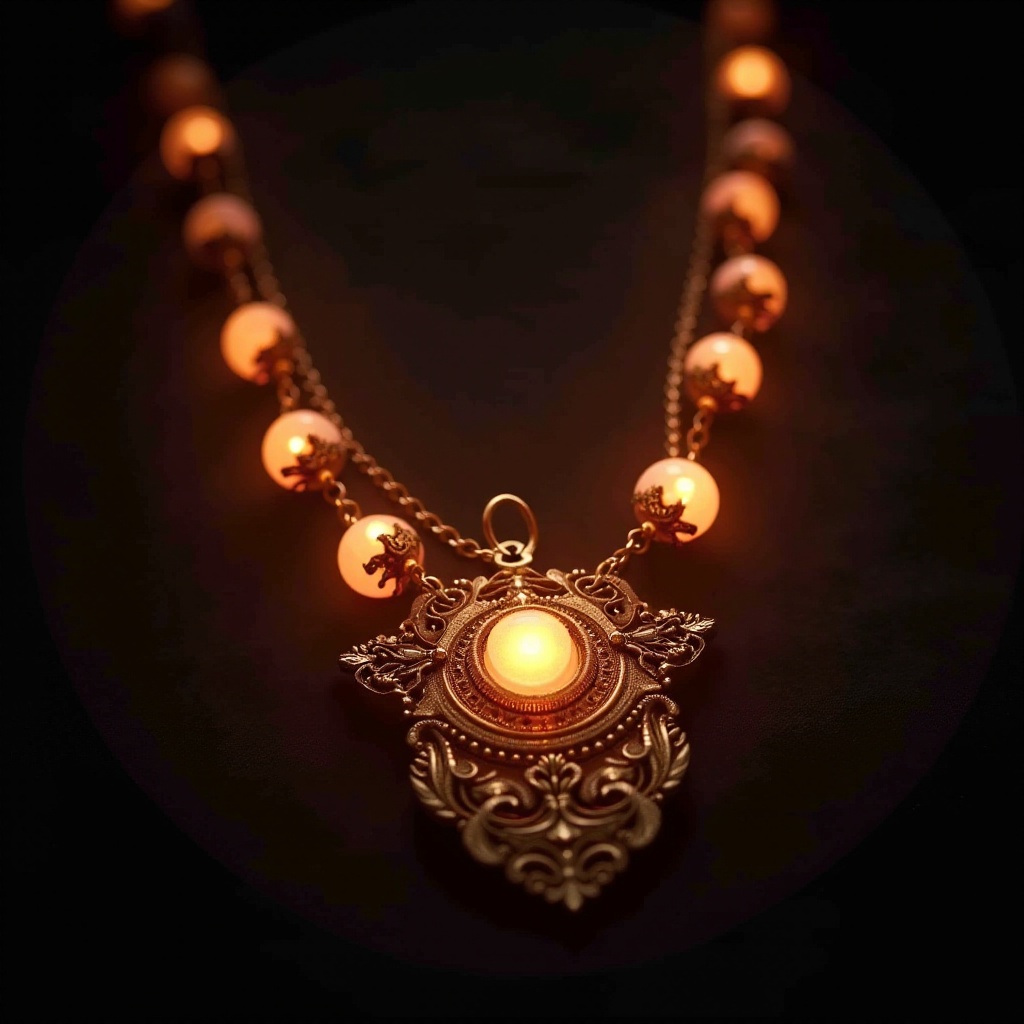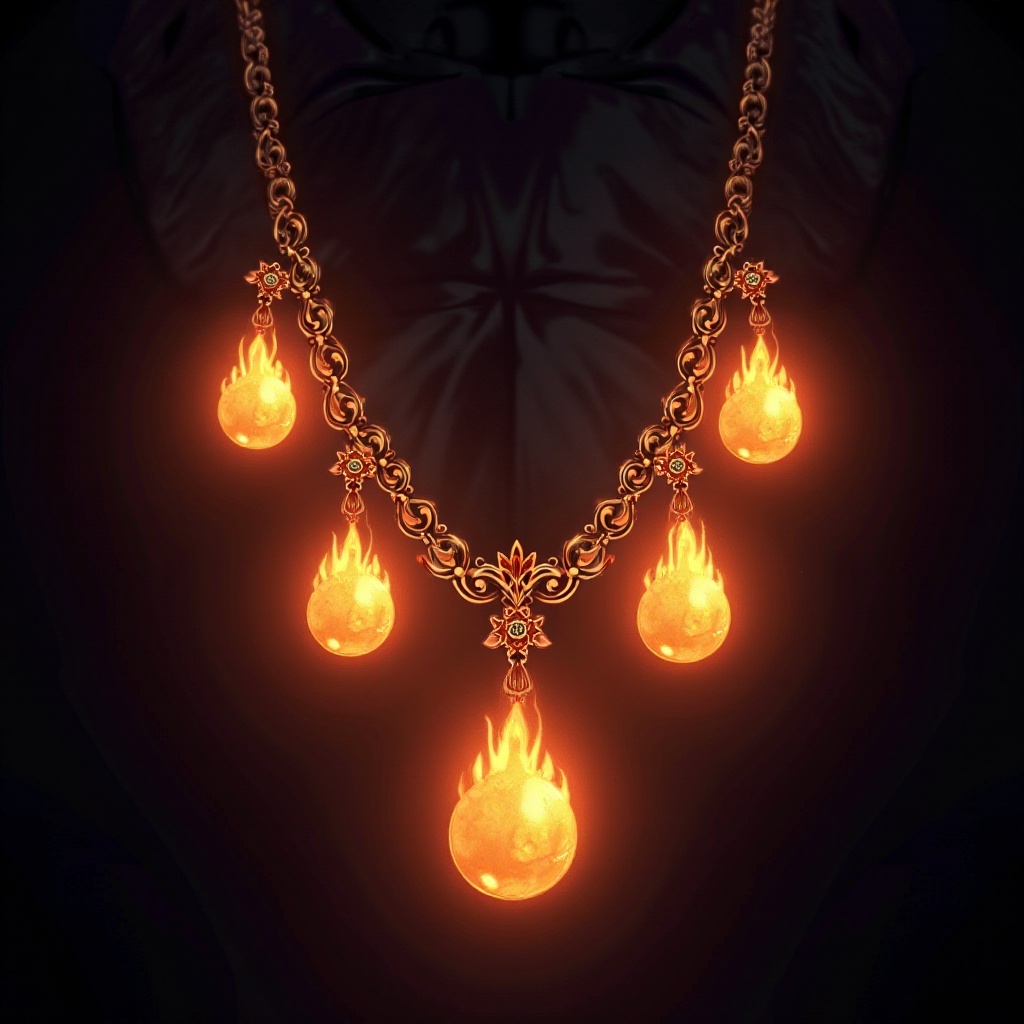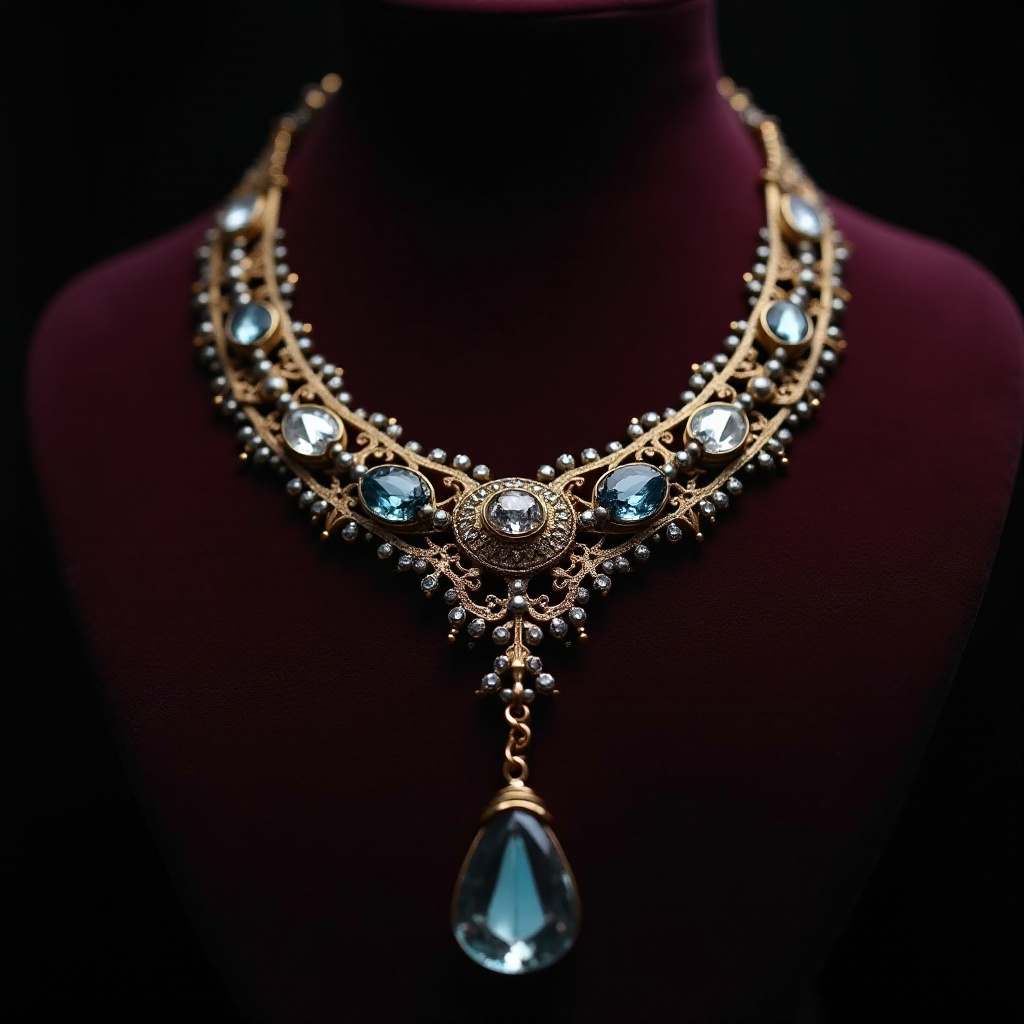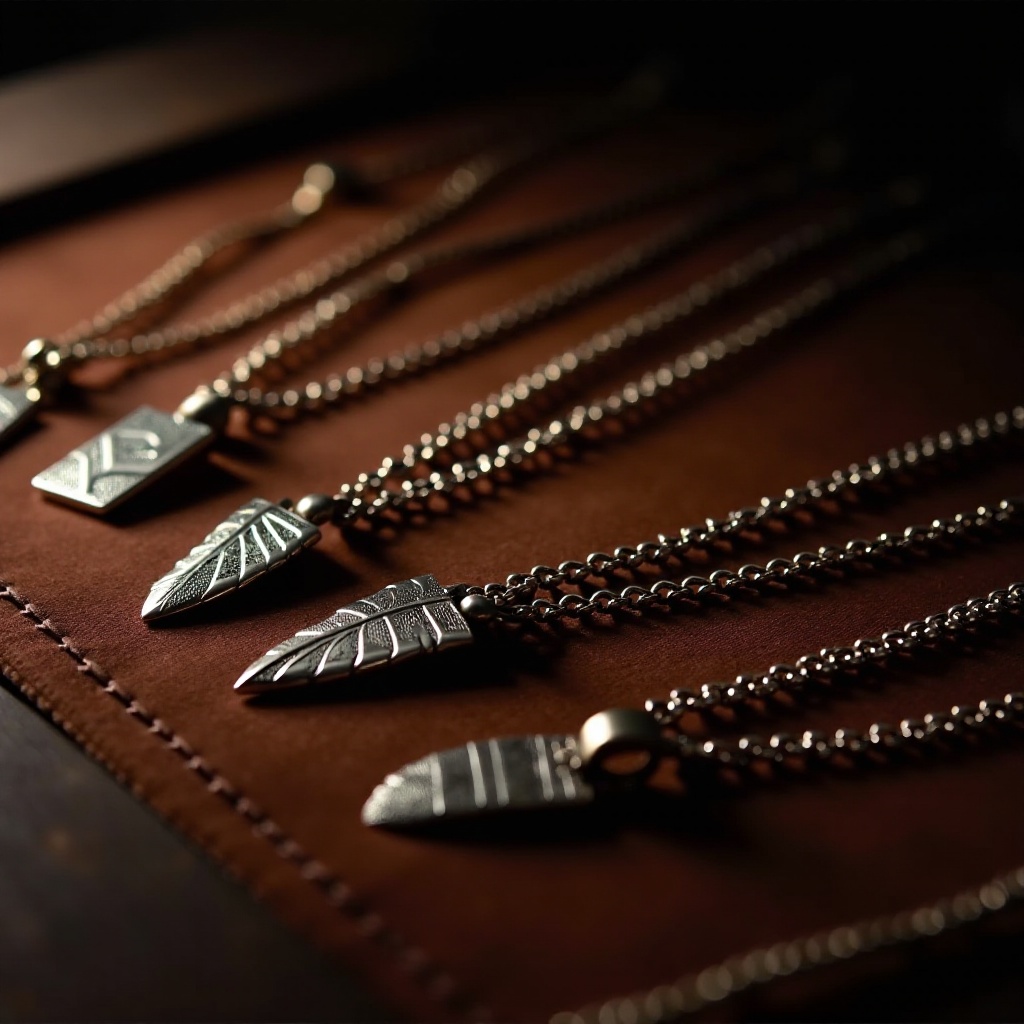Introduction
Few artifacts in the mystical realms captivate the imagination and embody strategic might as compellingly as the Necklace of Fireballs. This illustrious magical item is a masterpiece of enchantment, comprising a dazzling golden chain adorned with exquisitely crafted spheres. When adventure calls, and danger lurks at every corner, this necklace transforms its bearer into a veritable force of nature, capable of unleashing waves of fiery destruction with calculated precision. The lure of this necklace is as much about its lethal potential as it is about its rank as a prized possession among the daring and the bold. For those who master its use, the Necklace of Fireballs is not merely an accessory—it’s a transformative tool of war and protection, the quintessential talisman of adventurers.

Overview
The Necklace of Fireballs is an esteemed item in the lore of magical armaments, renowned for its potent offensive capabilities and strategic flexibility. Crafted with an intricate balance of beauty and might, each necklace is composed of detachable spheres that act as conduits of destructive magic. These spheres are not permanently affixed; instead, they offer the wearer the unique ability to remove and project them up to a distance of 70 feet. Upon their release, they detonate with formidable fiery blasts that can scatter foes and clear dense battlegrounds alike. This rare combination of portability and explosive prowess renders the necklace indispensable for adventurers and strategists seeking a blend of finesse and ferocity.

Types and Damage
Variety of Types
Understanding the nature of the Necklace of Fireballs involves familiarizing oneself with the different types, which range from Type I to the formidable Type VII. Each type is differentiated by the number of spheres it supports and the intensity of the fireballs they unleash. This diversity caters to a wide spectrum of tactical necessities, allowing adventurers to choose a type that aligns best with their combat styles and financial means. The spheres contained within higher types are not merely quantitative in variance but qualitative, with increased destructive power. This escalation means that selecting the right type could mean the difference between tactical dominance and marginal capability in critical scenarios.
Damage Potential and Cost
The correlation between a necklace’s type and its ability to inflict damage is significant; as one progresses to higher types, both the destructive power and cost rise correspondingly. This escalation underscores the importance of budgeting—both in terms of monetary resources and strategic planning. For many adventurers, each expenditure is balanced against potential needs in unforeseen crises. Decisions about which type to invest in are not taken lightly, as these choices resonate far beyond simple acquisition, directly influencing combat readiness and survival. A wise adventurer recognizes the necessity of harmonizing cost and destructive capacity, ensuring that each fireball cast offers maximum impact.
Moreover, the cost-effectiveness of each type is reflected not only in upfront purchase price but also in the availability and relative scarcity of replacement spheres. These components demand careful consideration, aligning the adventurer’s economic strategy with practical usage patterns on the battleground.
Usage
The effective deployment of the Necklace of Fireballs is more an art than a mere show of strength. Mastering this tool requires a keen eye and acute battlefield awareness. Each sphere must be deftly detached and expertly aimed to reach the optimal impact point within its 60-foot effective range. A well-timed and accurately thrown fireball can dismantle enemy formations, create diversions, or strategically dismantle environmental obstacles. The wielder’s adeptness in using the necklace becomes a tactical extension of their will, transforming strategic visions into fiery reality.
The limits of its usage demand respect; knowing when to unleash a sphere, and when to conserve resources, is integral to mastering the necklace’s potential. As such, practice and comprehension of combat dynamics are essential to wielding this magical item effectively. The necklace not only enhances the user’s offensive capabilities but also serves as a tool of deterrence, influencing enemy movement and engagement choices—thereby becoming a decisive element in battle strategy.

Summary
In summary, the Necklace of Fireballs is more than a historic artifact of enchantment; it is a symbol of strategic prowess and a catalyst for imaginative combat. With its balance of aesthetic beauty and overwhelming power, it holds an esteemed place among the arsenal of any astute adventurer. Understanding the variations, costs, and tactical applications of the Necklace of Fireballs empowers its bearer to execute strategic dominance. Thus, from an accessory of elegant design, it metamorphoses into a robust shield of offense and a beacon of fear, cementing its legacy as an indispensable ally in the grand tapestry of fantasy warfare.
How does the Necklace of Fireballs work in D&D games like 5e and Pathfinder?
The Necklace of Fireballs is a magical item used in Dungeons and Dragons (D&D), including 5th Edition (5e) and Pathfinder. It consists of several beads that, when detached and thrown up to 60 feet away, explode in an effect similar to the Fireball spell. The damage caused by each bead is identical to casting the Fireball spell, with each bead having a predetermined damage dice characteristic. The number of beads varies, and they can be used individually or thrown together for a cumulative effect. This versatile and powerful item allows characters to deal significant area damage, useful in combat against clustered groups of opponents.
How much is a Necklace of Fireballs worth and are there price variations in 5e or other versions?
The worth of a Necklace of Fireballs varies depending on the version or edition of the game. In D&D 5e, the Dungeon Master’s Guide suggests that such items are considered uncommon or rare, placing their worth anywhere from 200 to 5,000 gold pieces, depending on the number of beads remaining. Pathfinder’s pricing system may differ, often influenced by the beads’ potency and number. As with most magical items, the value can fluctuate based on availability and the campaign’s particular economy set by the Dungeon Master.
Does the Necklace of Fireballs recharge, and if so, how often?
The Necklace of Fireballs does not recharge on its own in either D&D 5e or Pathfinder. Once a bead is used, it is gone permanently. Players need to manage the use of this item’s beads carefully, as its power depletes with usage without natural or automatic replenishment. Additional beads or a new necklace would need to be acquired to regain its full potential.
How rare is the Necklace of Fireballs and how does it compare with other magical items like the Amulet of Health?
The Necklace of Fireballs is generally categorized as an uncommon or rare item in 5e, dependent on the number of beads it originally possesses. In comparison, an Amulet of Health is typically considered a rare item. The primary difference between the two lies in function; the Necklace of Fireballs is offensive, allowing players to unleash powerful attacks, while the Amulet of Health is defensive, improving the wearer’s Constitution score, thus enhancing their ability to endure damage. The rarity and desirability between the two can depend largely on a player’s strategy and needs within a campaign.
What are alternatives to the Necklace of Fireballs, such as the Wand of Fireballs?
Several alternatives to the Necklace of Fireballs exist, such as the Wand of Fireballs, which allows for casting the Fireball spell multiple times until its charges are depleted. Unlike the necklace, the wand’s charges typically can be replenished over time. Other potential alternatives include the Wand of Burning Hands or the Staff of Fire, which offers various fire-based spell capabilities. Each alternative has its unique advantages in terms of charges, versatility, and the variety of spells or effects it can produce, offering players options that can be selected to best fit their spellcasting strategy and the campaign’s challenges.


